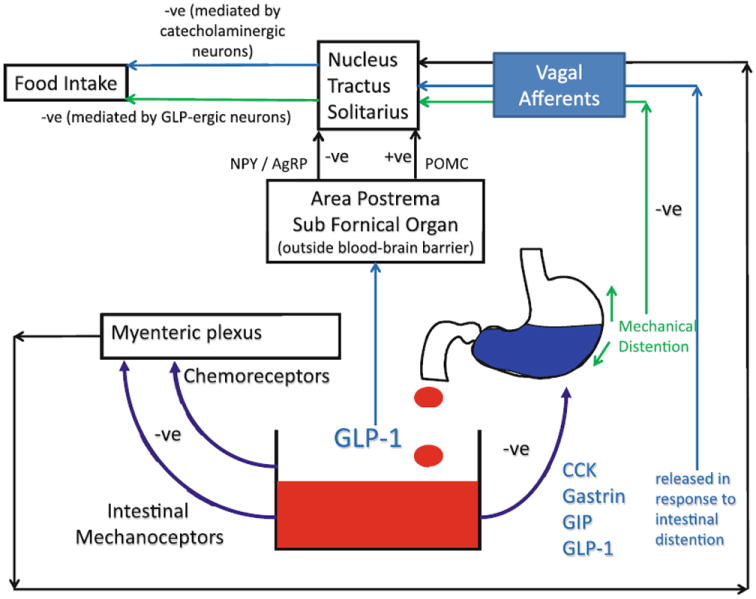Fig. 1.

The role of GLP-1 in modulating appetite. GLP-1 has effects on central and peripheral receptors. Afferent branches of the vagus relay information from chemoreceptors and mechanoreceptors in the gastrointestinal tract to the nucleus tractus solitarius (NTS). Circulating hormones could theoretically directly stimulate areas outside the blood brain barrier although the role of this pathway is of uncertain significance in normal physiology (–ve denotes an inhibitory effect, while + ve denotes a permissive/enhancing effect) [72,73,74]
